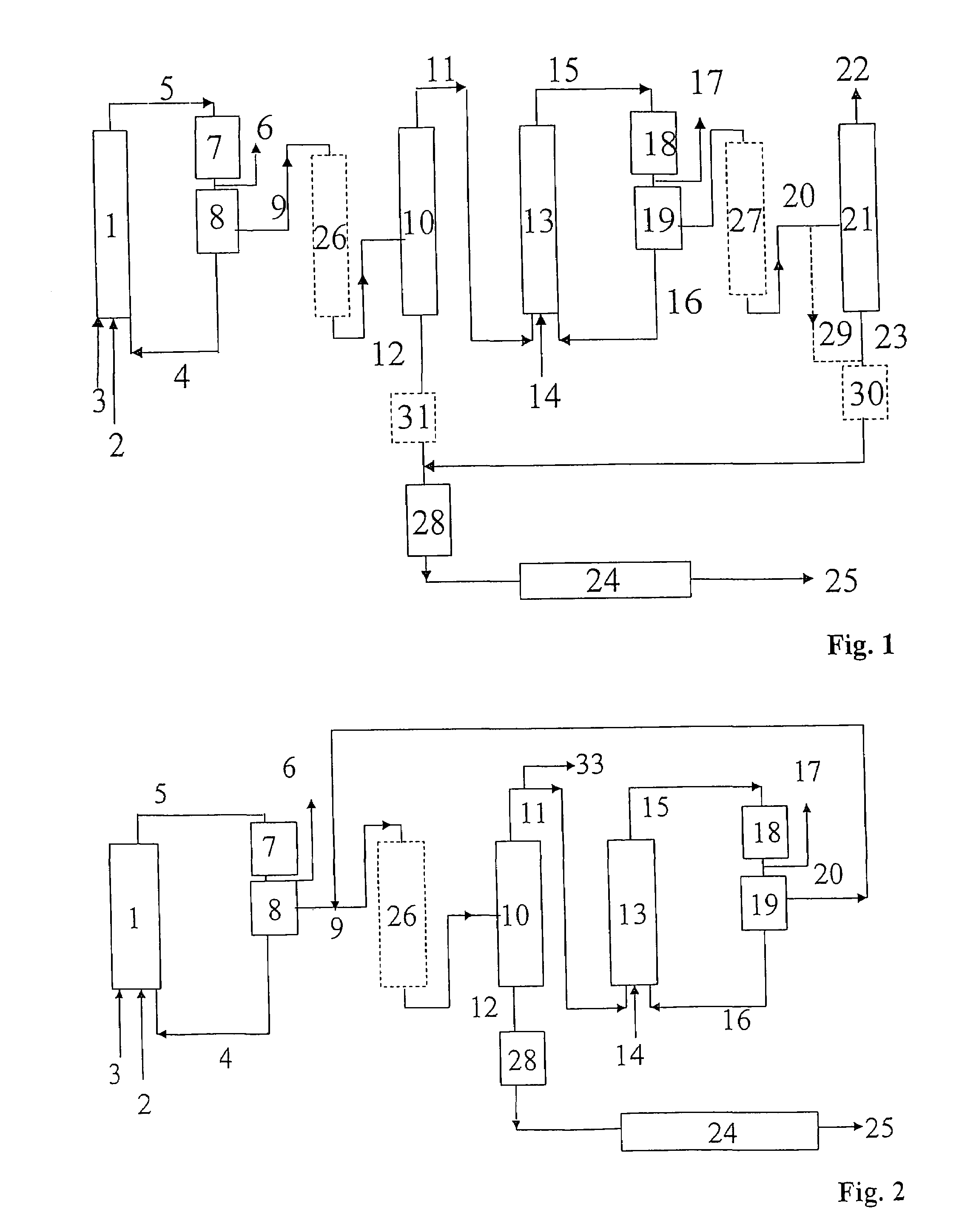Process for preparing alcohols from olefins by hydroformylation and hydrogenation
a technology which is applied in the field of hydroformylation and alcohol preparation of olefins, can solve the problems of adverse effects both on the hydrodynamics and the mass transfer and/or heat transport the conglutination of the first catalyst layer in the hydroformylation mixture, and the adverse effects of cobalt deposits on the hydrodynamics and the hydrodynamics of the hydrogenation reactor. achieve the effect of improving the process of production
- Summary
- Abstract
- Description
- Claims
- Application Information
AI Technical Summary
Benefits of technology
Problems solved by technology
Method used
Image
Examples
example 1
[0126]2 l of hydrogenation catalyst H 14154 (supplier: Degussa AG, Dusseldorf) (1400 g), which was in the form of cylindrical extrudates having a diameter of 1.2 mm and a length of from 2 to 10 mm, were placed in an adsorber (tube having an internal diameter of 50 mm). The length of the adsorber zone was thus 102 cm. A hydroformylation mixture from an isononanal plant having a content of cobalt compounds (expressed as cobalt) of 75 ppb by mass (75*10−9 g / g) was pumped through the vertical adsorber at a superficial velocity of 61 m / h, which corresponds to a volume flow in the empty tube of about 110 l / h. The adsorber was operated at a temperature of 70° C. and at 3.1 MPa. The flow through the adsorber was from the top downward.
[0127]After 283 m3 of hydroformylation mixture had flowed through the adsorbent, the adsorber was opened and the entire adsorbent was taken out in eight column sections without cross-mixing. The position within the adsorption column and a mean bed length, dista...
example 2
[0130]The same apparatus as in Example 1 was used. It was charged with 2 l of activated carbon from Chemviron. To carry out the adsorption, the same feed flowed through the adsorption tube at the same space velocity and the same temperature. After 647 m3 (519 t) of the hydroformylation mixture had been passed through the tube, the amount of cobalt on the total adsorbent was determined. This was 3.3 g.
example 3
[0131]Example 3 was carried out in a manner analogous to Example 2. The adsorbent used was silicon dioxide KC-Siliperl AF 125 from Kalichemie. After 1060 m3 (850 t) of hydroformylation mixture had been passed through the tube, 1.6 g of cobalt had been adsorbed.
[0132]The three examples show that the cobalt content of hydroformylation mixtures containing cobalt compounds in the trace range (ppb concentration range) can be reduced by adsorption. An adsorbent which is particularly well-suited for this purpose is the hydrogenation catalyst H 14154, which has an Al2O3 support.
PUM
| Property | Measurement | Unit |
|---|---|---|
| temperature | aaaaa | aaaaa |
| pressure | aaaaa | aaaaa |
| pressure | aaaaa | aaaaa |
Abstract
Description
Claims
Application Information
 Login to View More
Login to View More - R&D
- Intellectual Property
- Life Sciences
- Materials
- Tech Scout
- Unparalleled Data Quality
- Higher Quality Content
- 60% Fewer Hallucinations
Browse by: Latest US Patents, China's latest patents, Technical Efficacy Thesaurus, Application Domain, Technology Topic, Popular Technical Reports.
© 2025 PatSnap. All rights reserved.Legal|Privacy policy|Modern Slavery Act Transparency Statement|Sitemap|About US| Contact US: help@patsnap.com


